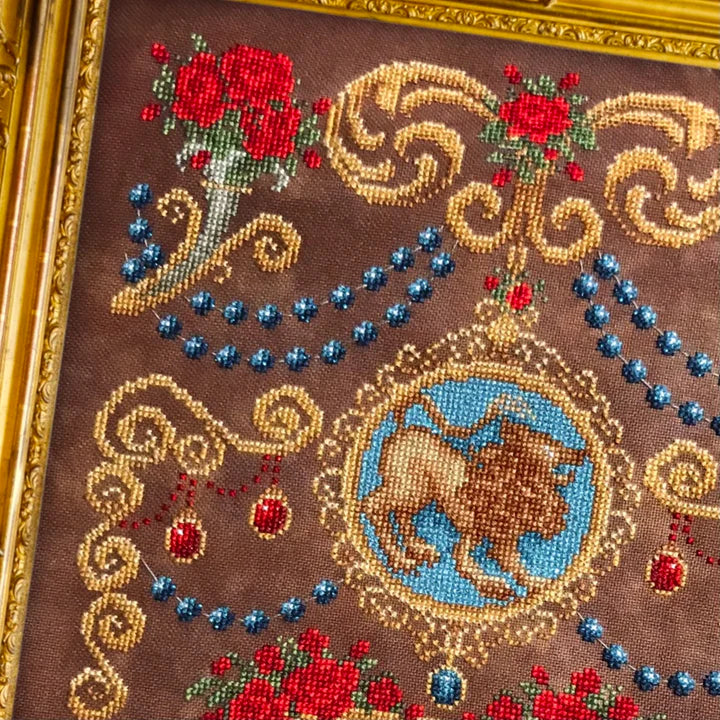Dirty Annie's
Venetian Lion - Dirty Annie's - Cross Stitch Pattern
Venetian Lion - Dirty Annie's - Cross Stitch Pattern
Low stock: 3 left
Couldn't load pickup availability
137x189 Model was stitched on 32ct "Nutmeg" even weave from Atomic Ranch using threads from DMC and Rainbow Gallery
The proud image of the lion is everywhere in Venice; gazing down from buildings, looking out from the keystone of an archway, or standing on fluted columns. The more you look, the more you see: no one knows how many there are.
Lions, and what they represented in terms of power and strength, were so important to the Venetians that centuries ago the nobility used to keep them captive in their gardens, and for a time the official state lion lived in a golden cage in the Piazza San Marco. He died, probably because he licked the bars of his cage and was poisoned by the gilding. Thereafter captive lions were forbidden, but the lion image continued in paintings, carvings, tapestries and frescoes.
Wandering around the alleyways of Venice you might come across the stone faces of lions set into the walls of public buildings. These are mouths of truth, places where malicious Venetians could make an anonymous denunciation by posting a name into the lion’s mouth. Two witnesses were needed in order to bring a suspect to trial, but these were cruel times and punishments were harsh.
The Lion is also a symbol of the Apostle Saint Mark. Venetian tradition states that when Mark was traveling through Europe, he arrived at a lagoon in Venice, whereby an angel appeared to him and said, "Peace be with thee, O Mark, my evangelist. Here thy body will rest." This tradition was used as justification for stealing the remains of Mark from his grave in Alexandria, and moving them to Venice, where they were eventually interred in the Basilica of St. Mark.
There are plenty of Lions throughout Venice for Leo lovers to enjoy. Best of all, Venice’s lions aren’t real—so you can enjoy them without feeling guilty over the fact that the object of your attentions would be happier gnawing on a zebra in the African Veldt.












